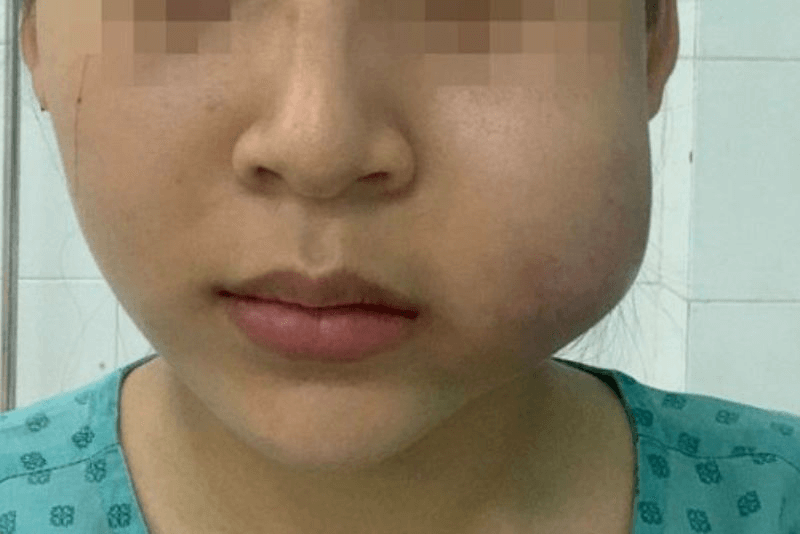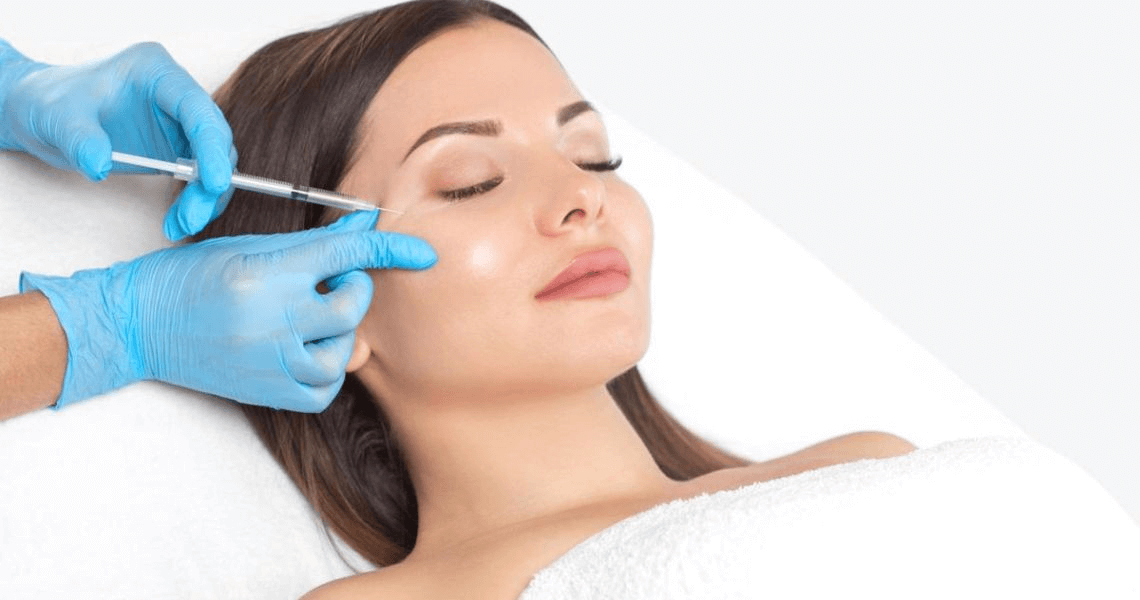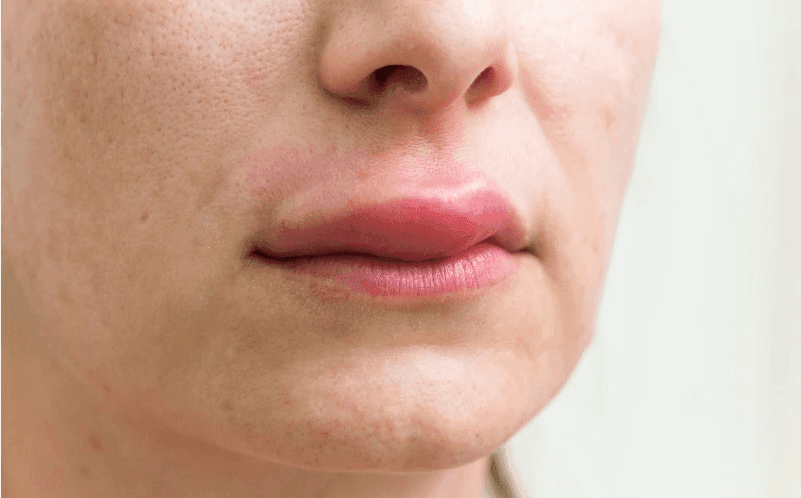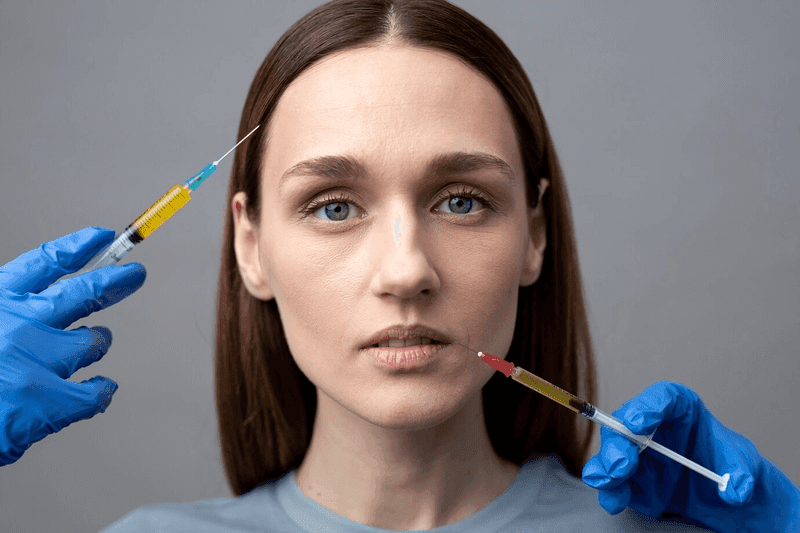Although dermal fillers are considered a safe and non-invasive beauty treatment, some individuals experience filler injection after 1 year swelling — a rare but concerning reaction. What causes this delayed swelling, and how should it be treated? Let’s explore expert insights from HBIO Clinic.
Recognizing Signs of Delayed Filler Swelling
Mild swelling right after filler treatment is common and temporary. However, if swelling occurs or worsens a year later, especially with abnormal symptoms, it might indicate underlying issues. Watch out for these signs:
-
Unusual or uneven bulging in the treated area
-
Redness, pain, or a burning sensation
-
Persistent swelling that doesn’t subside after 5–7 days
-
Bruising or dark discoloration spreading around the injection site
-
Yellow discharge, white pus, or lumps under the skin (possible infection)
-
Skin color changes to bluish or dark — possible tissue necrosis
See now: Filler Injection Bruises: Causes and How to Reduce Them Effectively

What Causes Filler Swelling After 1 Year?
There are several possible reasons for filler injection after 1 year swelling, even if the initial results were satisfactory:
Low-Quality Filler Materials
One of the leading causes of swelling after a long period of filler injection is the use of fillers of unknown origin and not meeting medical standards. These types of fillers often contain impurities or ingredients that are incompatible with the body, causing the injection area to react slowly, creating inflammation, swelling and prolonged pain. In addition, cheap, poor quality fillers can also cause clumping, infection or even tissue necrosis after a short or long period of time.
Poor Injection Technique
Filler injection technique requires absolute precision in injection location, dosage and depth. If the doctor is inexperienced or has poor skills, it is easy to inject the wrong tissue layer, damage capillaries or inject filler incorrectly, leading to swelling and pain after a while. In addition, incorrect injection technique also makes the filler not compatible with the skin structure, causing late complications such as facial deformity or prolonged swelling, even after 1 year of implementation.

Lack of Sterility During Procedure
An unsanitary filler injection procedure can be a potential cause of serious complications. If the needle, filler container or the operator’s hands are not properly sterilized, bacteria can easily penetrate the skin and cause a latent infection. These infections sometimes do not appear immediately but can last and flare up after months, even after a year, causing persistent swelling and pain that is difficult to control if not treated promptly.
Delayed Allergic Reaction
Although there is no obvious reaction at first, some people may experience a delayed allergic reaction to the filler after several months to a year. This occurs when the immune system gradually detects a foreign component in the filler and creates a rejection reaction, leading to inflammation at the injection site. Symptoms may include swelling, pain, lumps or discoloration of the skin. This case needs to be accurately diagnosed and treated with appropriate medication or medical measures to avoid more serious complications.

What To Do If You Have Filler Injection After 1 Year Swelling
If you’re experiencing swelling a year after receiving fillers, don’t panic. Here are recommended steps to treat and manage the issue safely:
-
Dissolve the filler with Hyaluronidase: This enzyme breaks down old filler quickly and safely, helping the body eliminate it naturally.
-
Visit a certified dermatologist: Immediate examination can determine whether you’re facing an allergic reaction, infection, or filler displacement.
-
Use prescribed medication: In some cases, antibiotics or anti-inflammatory drugs may be needed to manage symptoms.
-
Avoid irritating the area: Keep the skin clean, avoid strong pressure or massages, and stay away from spicy foods or alcohol.
-
Monitor your condition closely: If the swelling worsens or doesn’t improve in a week, return to a medical clinic for further assessment.
See now: Is HA Injection a Filler? Clarifying the Differences Between HA and Dermal Fillers

At HBIO Clinic, we specialize in handling complex filler cases, including filler injection after 1 year swelling. Our approach includes:
-
Comprehensive consultation to diagnose the cause of swelling
-
Use of certified Hyaluronidase for safe and quick filler breakdown
-
Strict sterile procedures to prevent further complications
-
Continuous aftercare and guidance until full recovery
-
Modern equipment and professional standards for natural results
Filler injection after 1 year swelling is uncommon but should never be ignored. With early diagnosis and proper intervention, the condition can be safely managed. If you’re unsure about your symptoms, contact HBIO Clinic for expert care and personalized treatment.
Click here: Top Signs of Filler Injection Necrosis You Should Never Ignore


 Tiếng Việt
Tiếng Việt
Dr. Thai Nguyen – Founder and Medical Director of HBIO Clinic. As an expert in aesthetic dermatology, she regularly shares in-depth knowledge and practical experience to provide valuable and insightful information for those seeking better skin health.